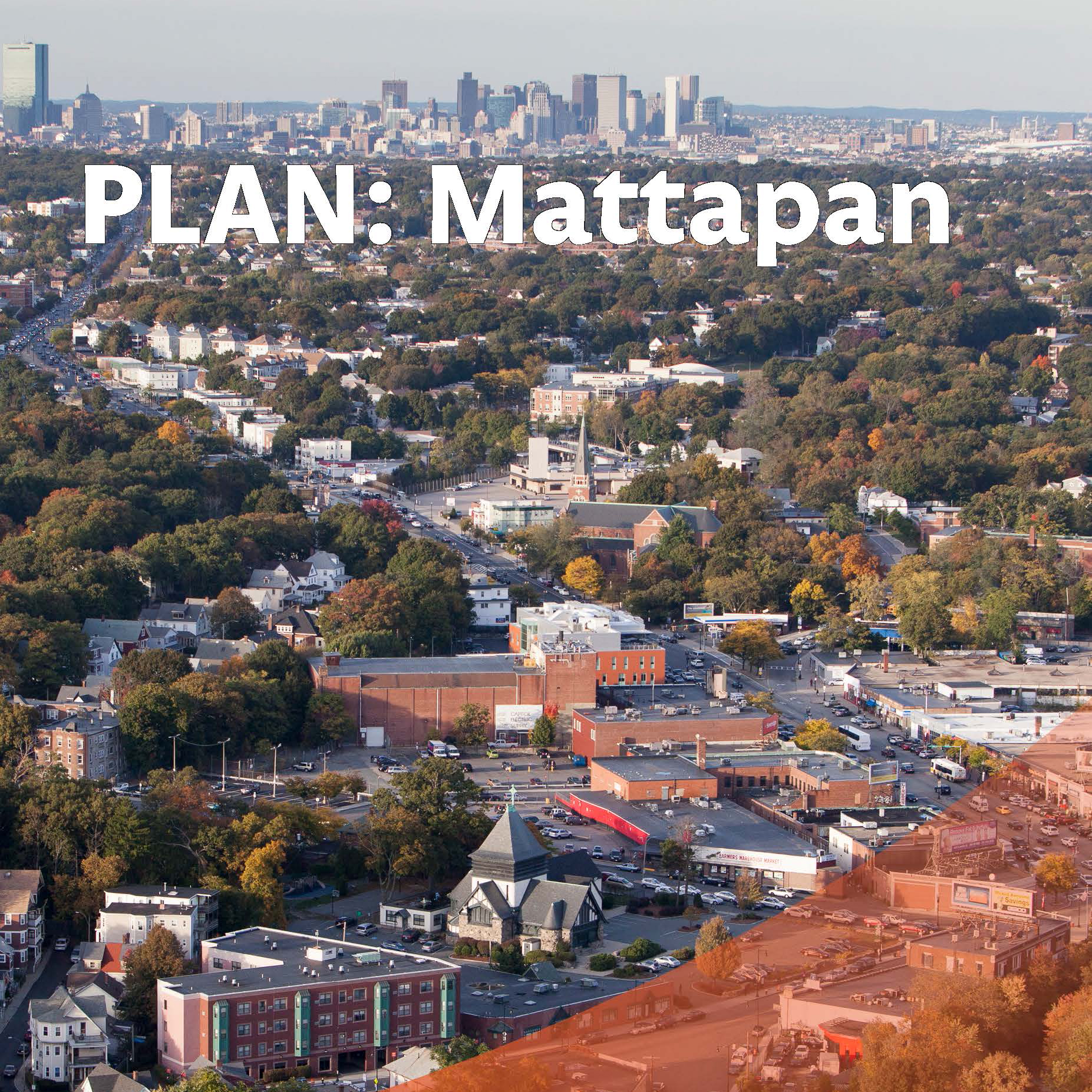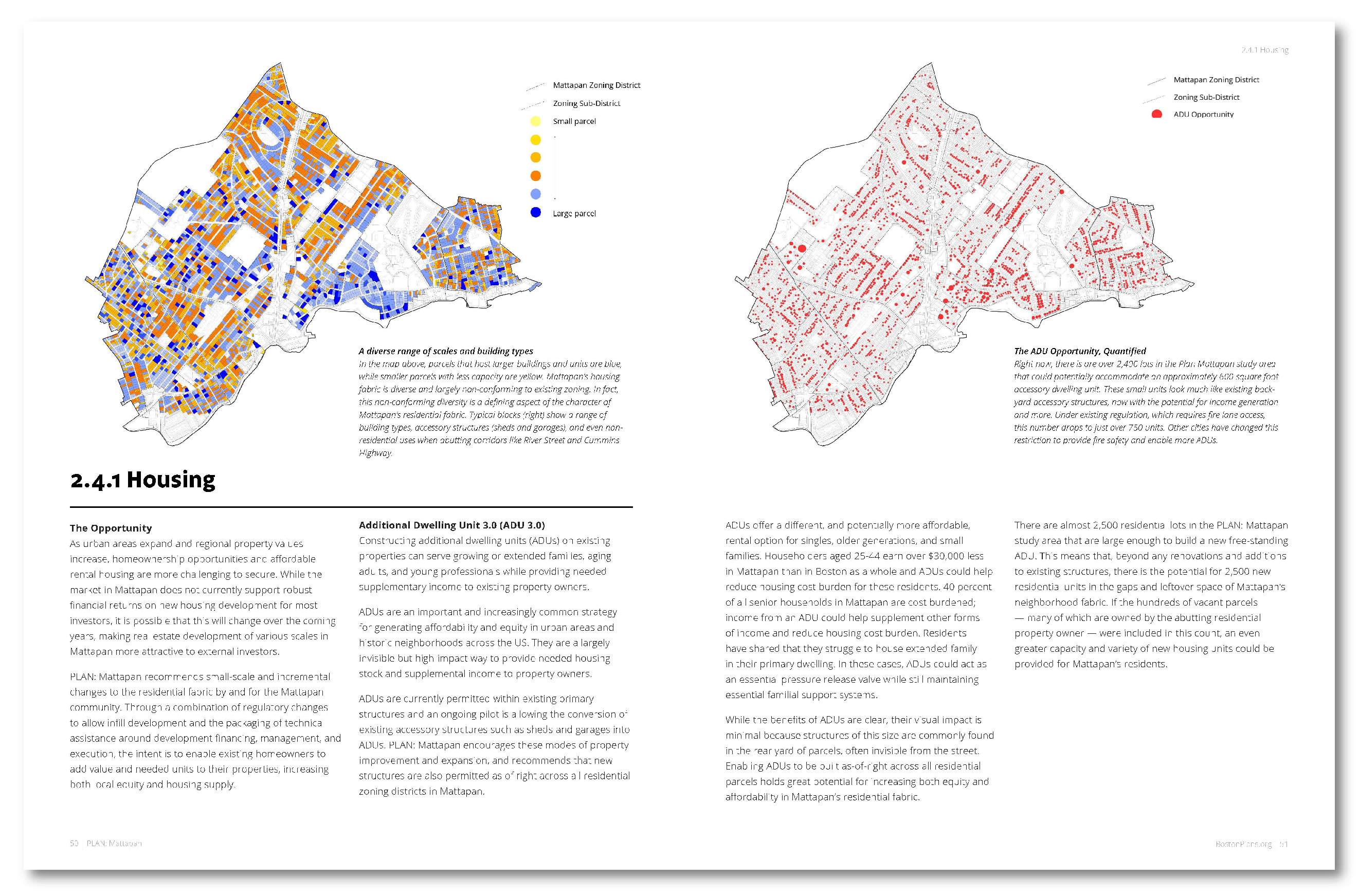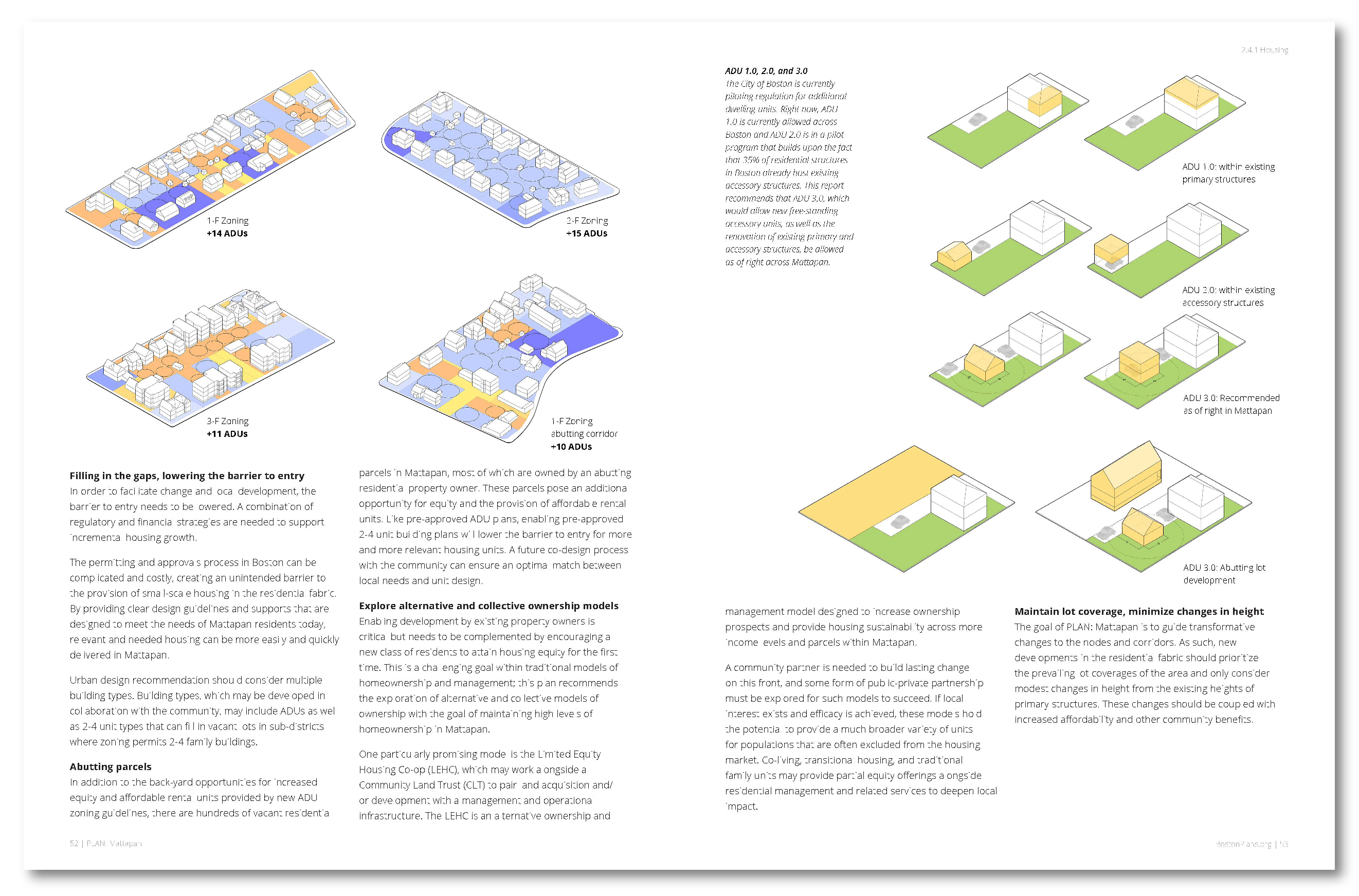Bottom-up incremental infill housing in PLAN: Mattapan

PLAN: Mattapan, 2022
Instead of a top-down vision for the physical plan of Boston’s Mattapan neighborhood, we imagined a bottom-up infill housing strategy for incremental but vast impact over time. The approach leverages the cool local housing market to enable the residents of Mattapan to self-determine the character and disposition of their neighborhood before the market swings to attract substantial external development interests.
We collaborated with the Boston Planning and Development Agency, Mass Design Group, Grayscale Collaborative, Toole Design Group, and RKG on this city planning initiative for the neighborhood of Mattapan. This work began before the pandemic and took on a new urgency as the implication of the crisis for the neighborhood became increasingly clear. In addition to public realm recommendations, Supernormal was responsible for establishing a strategy to address infill housing in the community’s low-rise residential fabric, which accounts for over 90% of the plan area.
PLAN: Mattapan recommends small-scale and incremental changes to the residential fabric by and for the Mattapan community. Through a combination of regulatory changes to allow infill development and the packaging of technical assistance around development financing, management, and execution, the intent is to enable existing homeowners to add value and needed units to their properties, increasing both local equity and housing supply.
Supernormal contributed automated spatial analysis of urban form combined with synthesis of community feedback to yield communication materials, scenarios, zoning recommendations, and the design of new building types for future change through the allowance of additional dwelling units (ADUs), increased access to amenities within a 5-minute walk of all housing units, and other infill strategies. We constructed a carefully interwoven projection for future small-scale infill housing that integrally considers emerging household structures (such as multi-generational households), existing and potential financing strategies, local equity, and future housing typologies. The goal is to enable real and equitable change through a pragmatic approach to bottom-up planning and design.
A draft of the plan, which is still in progress, was released in late 2022.
James Carrico, Elizabeth Christoforetti, Trent Fredrickson, and Keith Hartwig

